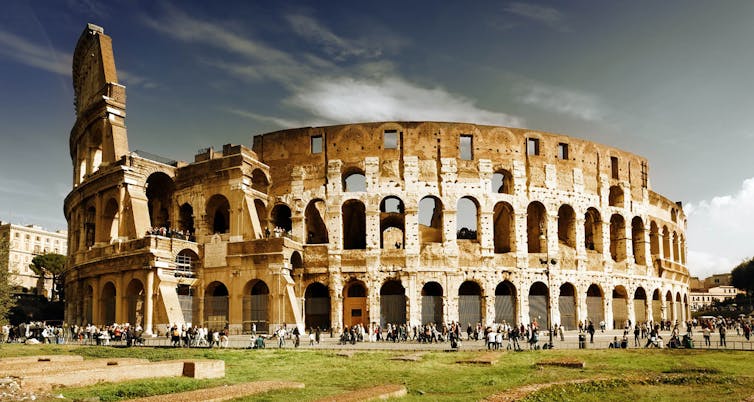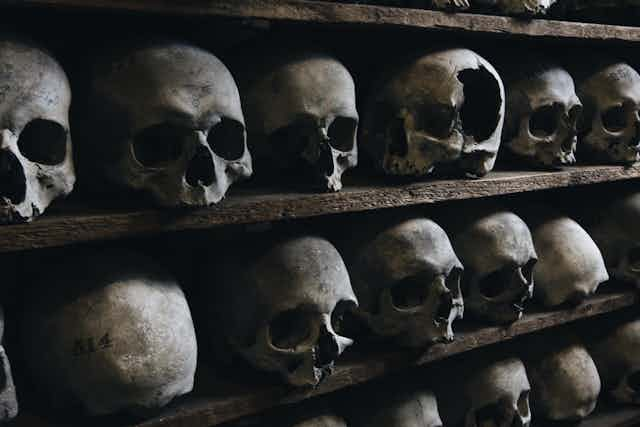Dark tourism has become a much more well-covered pasttime in recent years, in which a macabre fascination lead tourists to travel to various places not served by Thomas Cook: the sites of battles and genocides, war cemeteries, prisons, and even current warzones such as Syria.
The 20th century alone has provided such a long list of places at which catastrophes or great loss of life and suffering has occurred. Sites visited range from the spot from which JFK was assassinated, to prisons such as Alcatraz in San Francisco, through to battlefields of the World Wars, or the vestiges of genocides such at Auschwitz in Poland or Tuol Sleng in Phnom Penh, Cambodia. It’s not everybody’s cup of tea, but we shouldn’t condemn those for whom this is an interest.
Dark tourism appears to be a manifestation of our media-rich society through which information found online may persuade us to see historical sites in person. But its origins can be traced back much further than the fascination with death and disasters of the 19th and 20th century. In the 11th century, people and pilgrims often visited places with religious significance such as Jerusalem, where the location of Christ’s crucifixion is a popular attraction; tourists visited Gettysburg, the site of the bloodiest battle of the American Civil War in 1863; and in more recent centuries, the Grand Tour offered an opportunity for the wealthy to experience Europe, with sites such as the classical ruins of the Colosseum in Rome – which in the name of entertainment saw execution, torture and death – one of the must-see attractions.

Today, in parallel with the growth in popularity of dark tourism is the enormous growth of social media and the 24-hour news economy. The ease of access to such blanket coverage through the web, Facebook and Twitter has increased people’s awareness of, and fascination for, these historical sites of war, conflict and catastrophe. For example, the last decade has brought a surge in visitor numbers to Chernobyl, where guides take visitors around the abandoned city of Pripyat (radiation levels permitting) which has been deserted since the nuclear power plant explosion on April 26, 1986. The 30th anniversary this year has in itself added to interest in visiting the overgrown and crumbling city.
As with tourism of any kind, this greater footfall brings benefits. In this case, not just the economic boost but also as a tool of education and even conflict resolution. For example, the taxi tours of Belfast’s murals, which document Northern Ireland’s Troubles, offer visitors a way to understand the history and provide the communities involved a means to reflect and move on from the conflict. This model is viewed with interest and hope by moderates on both sides of the Arab-Israeli divide searching for a peaceful solution for the long term.
The tours of Robin Island prison in South Africa, where Nelson Mandela spent 18 years incarcerated among many others, starkly present how those imprisoned by a corrupt and discriminatory political regime can later engage in peace and reconciliation. The Soweto township tours in Johannesburg have acted in part as a means through which generations of South Africans can better understand their country’s dark past and help to establish truth and reconciliation for the future.
Dark tourism should not in my opinion by viewed as unethical, repugnant or even a self-indulgent activity. Certainly some dark tourists may engage in their pursuits for all the wrong reasons, seeing death and destruction as a commodity to be consumed with little thought for those who caught up in its wake. But others visit such sites to pay their respects, to better understand the magnitude of death and destruction, and to inform the outside world of the details of terrible events – even in some case offering to help. These are positive effects that may come from so much pain and suffering.
We should strive to better understand the origins of the terrible events of human history to be more able to prevent us repeating them. In this regard, that more people visit sites associated with dark tourism and learn about them should be seen as a positive.

